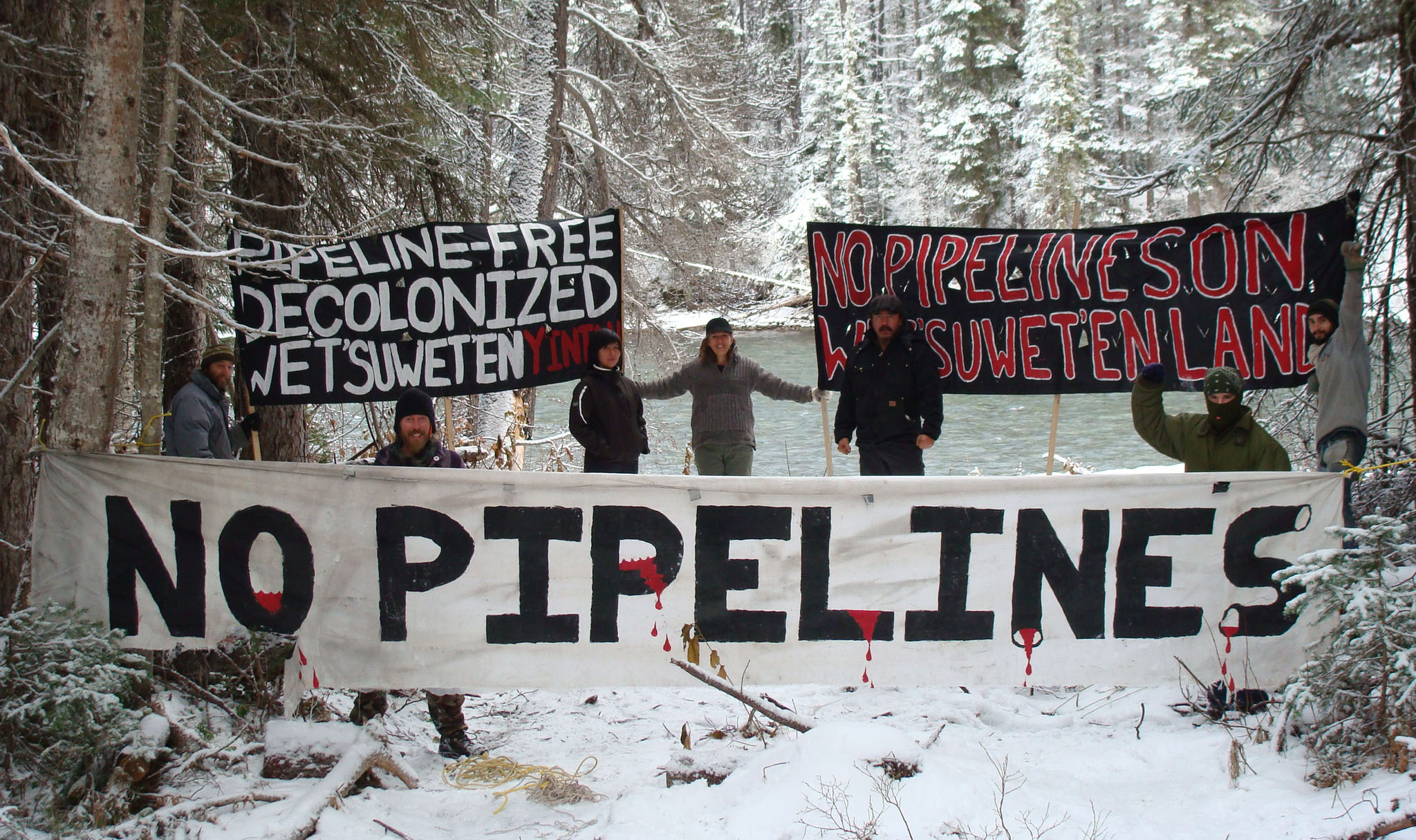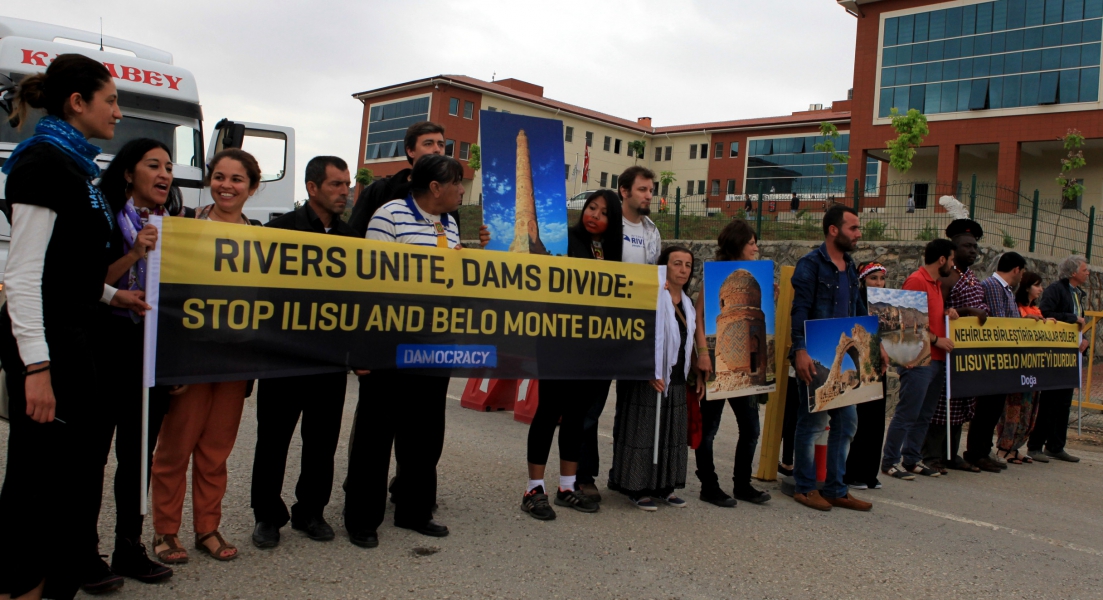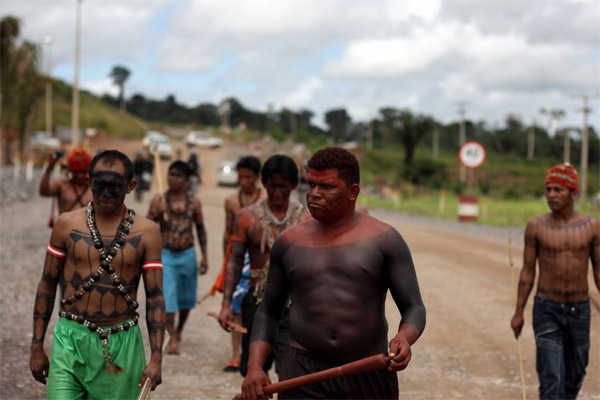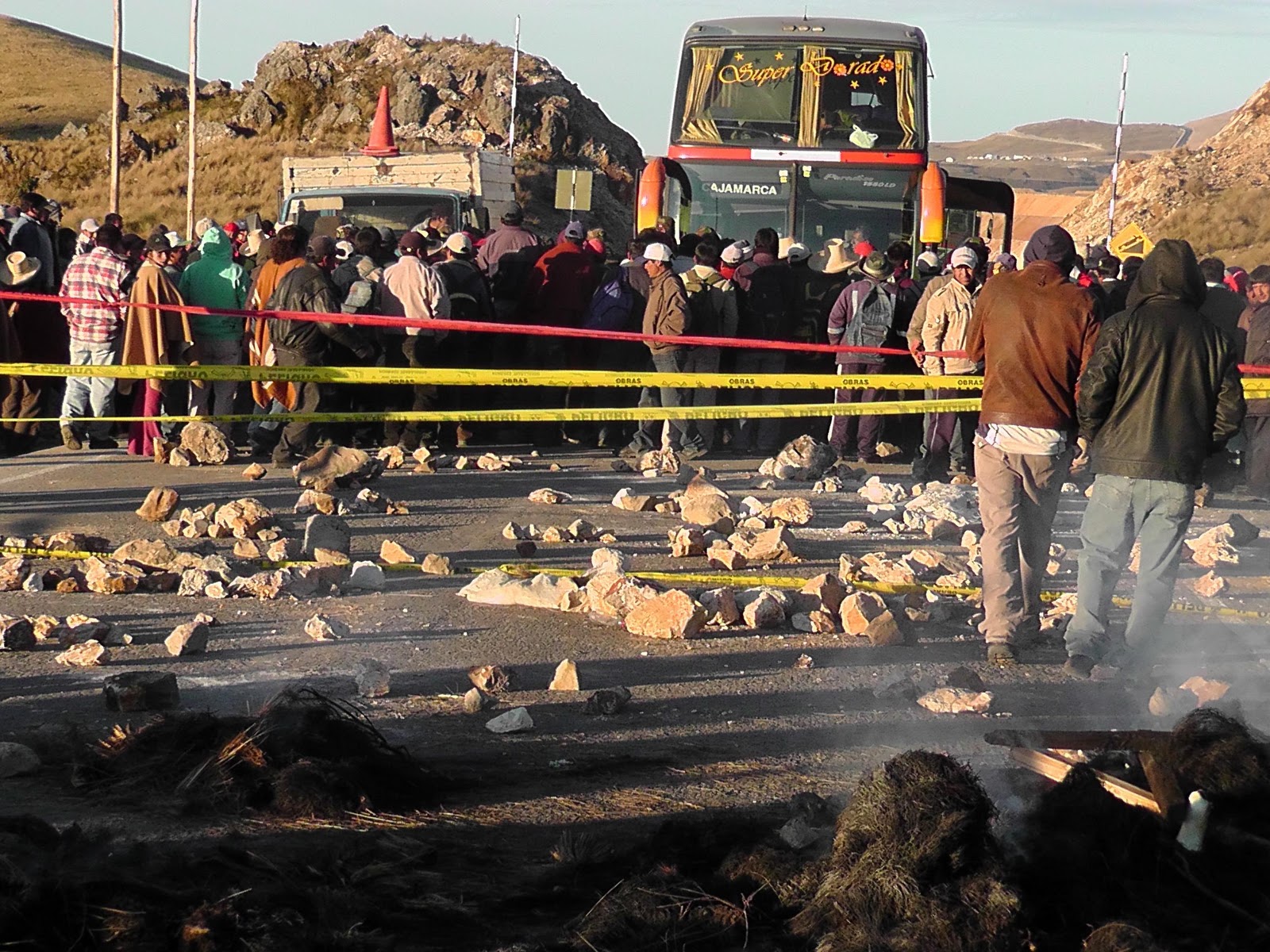
by Deep Green Resistance News Service | Jun 5, 2013 | ANALYSIS, Strategy & Analysis
Industrial civilization is killing the planet. It is, by its very nature, entirely dependent upon tearing & rending apart the fabric of the living world for the raw materials which sustain industrial society. As civilization fells ever more forests, blows apart ever more mountains, dams ever more rivers, vacuums ever more fisheries, drains ever more wetlands, plows ever more prairies, and replaces ever more of the natural world with concrete and fields growing food for solely human use, the bloody hands of empire must reach ever further afield to grasp for new pockets of wilderness to seize.
As industrial society becomes more and more globalized, so too does industrial destruction. Wild places that may once have been too remote to access find the crushing weight of civilization brought to bear upon them.
While the reach and presence of this way of life accelerate around the planet, the privileges and material prosperities afforded by its war against life remain the property of a small minority at the center of empire. It is to this center that the overwhelming portions of planetary plunder flow. It’s coded into the way empires—and civilizations—operate. The center of power conquers outlying lands, colonizing them and forcefully extracting resources, which flow back to feed the bloated power base.
The pattern is the same, whether we’re talking about cities extracting food via agriculture from the surrounding lands or the global economy extracting oil, steel, wood, etc. from the Global South. It is the same dynamic of empire—of colonies and conquerors. We may rationalize the pattern through complex social and economic theory, but it doesn’t change the underlying relationship of exploiter and exploited.
Central to the smooth function of this way of life are the logistics and transportation necessary to physically transport those materials from the site of extraction to the center of empire. The global economy is incredibly complex, so much so that how exactly it operates in the physical world may seem inexplicable, and only comprehensible in the abstract. But despite this, there are very specific infrastructures—foundations of support—that are fundamental to its function. The infrastructure of globalized transportation and logistics is among these; without them, the precarious balance of industrial society would collapse.
In the incessant drive towards ever-greater efficiency—the drive to expand “economic production” (read the conversion of living landbases into private wealth) beyond any limitations—the industrial economy is becoming ever more dependent upon fast-paced transportation and logistics. It’s why most grocery stores only have a 72 hour supply of food in-store. By reducing inventory capacity and relying upon “Just-in-Time” transportation systems, industrialism has accelerated its pace, but at the expense of its stability.
For those who understand the destruction and horror that is this way of life—those who understand that it must be stopped and dismantled at any cost—the centrality and fragility of the systems responsible for the transportation of resources & goods presents a strategic target for disruption and sabotage.
Fortunately, these transportation networks are large and poorly defended. A paper recently released by the Macdonald-Laurier Institute, written by Douglas Bland, cited the criticality and vulnerability of Canada’s rail transport infrastructure as weaknesses which could be exploited to cripple the entire Canadian economy. The report talks specifically about the potential of an “aboriginal uprising” in Canada and how such a mobilization could impact the industrial economy of the nation:
In the event of an insurgency, the Canadian economy could be shut down in weeks. The 2012 CP Rail strike cost an estimated $540-million a week, as it hit industries including coal, grain, potash, nickel, lumber and autos. Some First Nations leaders like Terry Nelson in Manitoba have already concluded that a covert operation involving burning cars on every railway line would be impossible to stop.
This vulnerability in the structure of modern civilization is present outside of Canada; indeed, it is characteristic of the global economy. These transportation and logistical networks—those that connect and maintain the flow between the different nodes of industrial production—are fragile, sprawling, and poorly guarded. And they’re very vulnerable to sabotage.
As just one recent example, some anonymous folks sabotaged rail lines in Central Oregon in celebration of May Day a month ago. In their own words,
Late at night on May Day we sabotaged a rail line in Central Oregon to interrupt the flow of commodities. Capital depends more than ever on the metropolis, the constant flow of commodities, services, capital, information, and any interruption of that flow is a small victory… This action was quick and easy. Using copper wire with the ends stripped, we wrapped both ends of wire around the rail and buried the middle section. This sends a false signal that there is a train on the tracks, delaying any other movement until the blockage is cleared.
Like many forms of sabotage, it doesn’t take much, as the communique issued by those behind this particular action so kindly describes.
Of course, while we understand that disrupting a single rail line on a single night will have little to no measurable impact on the masticating gears of industrialism, such sustained actions—as described by Bland’s paper—could translate into effective systems disruption. With the whole of the globalized economy so dependent upon such a precarious & precisely balanced transportation infrastructure, the impacts of such a campaign of sabotage could have massive and far reaching effects.
This way of life cannot last. It remains steady and standing only through actively destroying and consuming the fabric of the living world. The movement of materials—the blood soaked corpses of its victims—through the industrial system is central to this. To stop that movement is to stop the machine. While it may not be the first course of action many would turn to, and while it may make some uncomfortable, sustained and coordinated sabotage against the industrial transport infrastructure presents a strategic way to disrupt and halt the monstrous activity of industrial civilization.
Civilization is not static; it is a holocaust in motion. As we all know, an object in motion stays in motion, unless acted upon by an outside force. It’s long past time to apply that force.
Time is Short: Reports, Reflections & Analysis on Underground Resistance is a biweekly bulletin dedicated to promoting and normalizing underground resistance, as well as dissecting and studying its forms and implementation, including essays and articles about underground resistance, surveys of current and historical resistance movements, militant theory and praxis, strategic analysis, and more. We welcome you to contact us with comments, questions, or other ideas at undergroundpromotion@deepgreenresistance.org
Photo by American Public Power Association on Unsplash

by Deep Green Resistance News Service | Jun 1, 2013 | Lobbying, Toxification
By Jonathan Fowlie, Scott Simpson and Jeff Lee / Vancouver Sun
The B.C. Liberal government has strongly rejected the proposed Enbridge Northern Gateway pipeline, stating in a formal submission to a National Energy Board review panel that the company has not properly addressed the province’s environmental concerns.
The province did not outright kill the proposed $6-billion oil pipeline from Alberta to the West Coast at Kitimat, but said Enbridge has left unanswered too many questions about its ability to protect marine or freshwater ecosystems in the event of a spill.
The proponents have “presented little evidence about how it will respond in the event of a spill,” the province wrote in its submission to the Northern Gateway Pipeline Joint Review Panel.
“It is not clear from the evidence that (Northern Gateway) will in fact be able to respond effectively to spills either from the pipeline itself, or from tankers transporting diluted bitumen from the proposed Kitimat terminal.”
B.C. said Enbridge failed to explain how it would respond to a catastrophic spill.
“The project before (the Joint Review Panel) is not a typical pipeline. For example: the behaviour in water of the material to be transported is incompletely understood; the terrain the pipeline would cross is not only remote, it is in many places extremely difficult to access; the impact of spills into pristine river environments would be profound,” the province wrote.
“In these particular and unique circumstances, (Northern Gateway) should not be granted a certificate on the basis of a promise to do more study and planning once the certificate is granted. The standard in this particular case must be higher,” it added.
“‘Trust me’ is not good enough in this case.”
The rejection is a major hurdle for the multi-billion dollar pipeline project, and especially for its ability to gain approval from the Joint Review Panel.
“It simply is insufficient for us to think it should go forward,” provincial Environment Minister Terry Lake said in an interview on Friday.
“The company was unable to give us adequate detail about how they would respond to a spill in some of these (freshwater) locations,” he continued.
“There’s a lot of questions about the behaviour of this product in cold marine environments, and a recognition that more research needs to be done on whether this material would float or whether it would sink, because obviously that makes a difference in terms of any potential spill and how it would be dealt with.”
Lake said the province’s submission is not a death knell for the project, but does set a “high bar” for it to proceed.
“Until the National Energy Board is able to process all this and deliver a final verdict, we don’t want to conclude that this is absolutely a no,” he said. “But we’re just saying from what we’ve seen to date, it doesn’t meet the test.”

by Deep Green Resistance News Service | May 28, 2013 | Obstruction & Occupation
By Amazon Watch
Today [May 21, 2013] representatives of dam-affected communities and organizations from South America, the Middle East, Europe, the US and Africa, including Brazilian indigenous leaders accompanied by Amazon Watch, blocked the entrance to the construction site of the Ilisu dam in southeast Turkey demanding an end to controversial development that would sink an ancient city dating back to the Bronze Age.
Some 20 people including Kayapó Chief Megaron Txucarramae, one of Brazil’s most noted indigenous leaders in the struggle against the Belo Monte dam in the Amazon, held up banners in English and Turkish reading ‘Rivers Unite, Dams Divide: Stop Ilisu and Belo Monte dams.’ Delegates from the International Rivers Conference held in Istanbul last Saturday joined local protestors to show solidarity with their struggle to stop the Ilisu dam on the Tigris River, Turkey’s last free-flowing river.
“The peace process cannot be completed without the cancellation of the controversial Ilisu dam project and the protection of Hasankeyf. At the same time, damming the Tigris and Euphrates rivers and stopping their flow reaching Syria and Iraq is a contradiction to Turkey’s ‘zero problems’ policy with its neighbors because the increasing water crisis in the Mesopotamian basin may lead to increased conflict,” said Dicle Tuba Kilic, Rivers Program Coordinator for Doga (BirdLife Turkey).
The Belo Monte dam in Brazil and the Ilisu dam in Turkey are two of the most controversial mega-dam projects in the world today. Both dams are located in cultural and natural hotspots, inflicting devastating consequences and displacing over 75,000 people in Amazonia and Mesopotamia. In addition, the Ilisu dam, located a few kilometers from the Iraqi border, will affect the livelihood of Marsh Arabs living in the newly restored Basra Marshes. Turkey controls the Tigris and Euphrates headwaters, which dictates how much water flows downstream into Syria and Iraq.
“Our struggle to preserve the Xingu River from the Belo Monte dam is no different from the fight to protect the Tigris River from the Ilisu dam. We are unified in our positions to say ‘no’ to our governments. You cannot kill a river that sustains its people and culture,” said Kayapó Chief Megaron Txucarramae.
Legal and political controversies have surrounded the push to build the Belo Monte and Ilisu dams. No adequate Environmental Impact Assessment has been carried out for either dam, and both governments have failed to implement prior consultations and mitigation plans to protect the environment and rights of affected communities. Both dams proceed despite court rulings halting their construction and widespread national and international opposition to their development.
Faced by governments steamrolling human rights and environmental protections, dam-affected communities are uniting their struggle under the DAMOCRACY banner. DAMOCRACY includes 15 national and international organizations from all corners of the globe. Among them are Doga Dernegi, Amazon Watch, International Rivers, and RiverWatch.
Damocracy is produced by Doga Dernegi (BirdLife Turkey), in collaboration with other founding members of the Damocracy movement: Amazon Watch, International Rivers, RiverWatch, Gota D’água (Drop of Water) Movement, Instituto Socioambiental (ISA) and Movimento Xingu Vivo para Sempre (MXVPS).
To watch the documentary, visit: http;//www.youtube.com/DamocracyTV
From Amazon Watch: http://amazonwatch.org/news/2013/0521-international-activists-block-ilisu-dam-construction-site-in-turkey

by Deep Green Resistance News Service | May 5, 2013 | Biodiversity & Habitat Destruction, Colonialism & Conquest, Indigenous Autonomy, Obstruction & Occupation
By Mongabay
On Thursday roughly 200 indigenous people launched an occupation of a key construction site for the controversial Belo Monte dam in the Brazilian Amazon. The protestors, who represent communities that will be affected by the massive dam, are demanding immediate suspension of all work on hydroelectric projects on the Xingu, Tapajós and Teles Pires rivers until they are properly consulted, according to a coalition of environmental groups opposing the projects.
The protestors include members of the Juruna, Kayapó, Xipaya, Kuruaya, Asurini, Parakanã, Arara, and Munduruku tribes. Non-indigenous fishermen and riverine community members that will also be affected by Belo Monte have also reportedly joined the demonstration. Organizers say the occupation will continue “indefinitely or until the federal government meets their demands.”
“Today’s protest demonstrates the relentless resistance of a growing group of united peoples against Belo Monte, Tapajós and destructive dams throughout the Amazon,” said Leila Salazar-Lopez, Amazon Watch Program Director, in a statement. “These are the final moments to change course as construction closes in on the Xingu and other lifeline rivers of the Amazon.”
Belo Monte has been the site of several protests since the Brazilian government finalized approval of Belo Monte. Indigenous groups, local fishermen, and environmentalists are strongly opposed to the project, while will divert nearly 80 percent of the flow of the Xingu river, one of the Amazon’s mightiest tributaries. The dam will flood tens of thousands of hectares of land, displace more than 15,000 people, and could push several endemic fish species to extinction. Belo Monte, which will operate at less than 40 percent of capacity despite its $15 billion dollar price tag, will require additional upstream dams to be commercially viable, according to independent analysts, potentially amplifying the project’s impact.
Belo Monte and other dams on the Xingu represent just a small fraction of the hydropower projects being developed by Brazil in the Amazon Basin. According to an analysis published last year, 231 dams are currently planned in the Brazilian Amazon alone. Another 15 are slated for Peru and Bolivia.
Ecologists say there are myriad problems with large dams in tropical ecosystems, especially when built on the scale envisioned in the Amazon. Large dams interfere with the hydrological cycle and nutrient flows through an ecosystem, while restricting or blocking access to breeding and feeding grounds for migratory fish species. Meanwhile areas inundated with water can generate substantial greenhouse gas emissions. Design flaws in some tropical dams, which draw methane from the base of their reservoirs, can exacerbate climate impacts. Finally flooding in the reservoir area can displace communities traditionally dependent on rivers, while creating hardship downstream from degraded fisheries.
From Mongabay: “Tribesmen launch ‘occupy’ protest at dam site in the Amazon rainforest“

by Deep Green Resistance News Service | May 1, 2013 | Lobbying, Mining & Drilling, Property & Material Destruction, Strategy & Analysis
Mining is one of the most viscerally destructive and horrific ways in which the dominant culture—industrial civilization—enacts its violence on the living world. As entirely and unequivocally destructive as this society is, few other industrial activities are as horrifically confronting as mining. Whole landscapes are cleared of life as communities—most often indigenous or poor—are forced from their homes. Mountains level to piles of barren rubble which leach countless poisons, scouring life from whole watersheds. Pits of unimaginable size are carved from the bones of the earth, leaving moonscapes in their wake.
Besides the immediate damage to the land at the site of operations, the destruction extends through the uses its products are put to. In this way, mining is crucial to the continued function of industrial civilization, supplying many of the raw materials that form the material fabric of industrial society. Steel, aluminum, copper, coal, tar sands bitumen, cement; the materials extracted through mining are central components of industrial civilization in an immediate and physical way. They are the building blocks of this society.
Fortunately, as is the way of things, where there is atrocity and brutalization, there is resistance. There has been a lot of militant anti-mining action happening recently; in the last few months alone there have been several inspiring incidents of people taking direct militant action against mining projects and infrastructure.
In February, several dozen masked militants raided the Hellas gold mine in Halkidiki, Greece. They firebombed machinery, vehicles, and offices at the site. The attack followed several years of legal challenges and public demonstrations—none of which succeeded in stopping the mine, which will destroy forests, poison groundwater, and release air pollutants including lead, mercury and arsenic.
When local residents tried to stop the mine through the courts the government ruled against them, claiming that the mine would create jobs. As the Deputy Minister of Energy and Environment Asimakis Papageorgiou said, “We can no longer accept this [area] being left unexploited or barely exploited.”
Statements like these on the part of those in power, while not necessarily surprising, help to make clear the reality we face; the dominant culture requires the rending of the living world into dead commodities. It can’t be persuaded to change, no matter how compassionate and compelling the appeals we make. It can only be forced to change.
More recently, the Powharnal coal mine in Scotland was attacked at the beginning of April. An anonymous communique was released via Indymedia Scotland:
At some point over the past weekend multiple items of plant machinery at an extension to the Powharnal open cast coal site in East Ayrshire were put beyond working use. High value targets including a prime mover and bulldozer were also targeted to cause maximum disruption to workings at the mine.
Scottish Coal is falling and not only do we intend to make sure that they go down – but that they stay down too.
This action presents yet another hopeful example of militant action targeting extractive projects. This was not a symbolic act of property destruction, but rather one aimed at materially disrupting and stopping destructive activity. More so, the actionist(s) specifically targeted key equipment and infrastructure at the site to maximize the impact of their actions, making good use of effective systems disruption.
A third example comes from Peru, where in mid-April several hundred protestors stormed the Minas Conga gold & copper mine, occupying the site for a short while and burning equipment. Besides the immediate damage done by the arson, the action forced the operating company, Minera Yanacocha, to evacuate personnel and equipment, further disrupting their operations.
This latest protest in April is the latest in a continuous and diverse tapestry of resistance to the Minas Conga mine. Such direct and militant protests and actions last year forced Yanacocha to put most of the mining project on hold, and the strong unyielding opposition has Newmont Mining Corporation (which owns Yanacocha) considering pulling out of the project altogether. This is yet another example of how effective militant action can be in stopping mining and other extractive projects.
Of course there are plenty of aboveground and nonviolent efforts being made to oppose mining projects happening as well, and this isn’t meant to detract from or dismiss their efforts. But the dominant culture needs access to the raw materials that feed the global economy, and in the end it will secure those resources by force, refusing to hear “no!”
Again, this isn’t to say that nonviolent efforts are by any means doomed to failure each and every time we employ them. It is to acknowledge that the entire existence and operation of industrial civilization requires continued access to “raw materials” (otherwise known as natural living communities), and that the courts, regulatory systems, and laws have all been designed to preserve that arrangement. We may win occasional victories here and there, but like a casino, they—the House, the capitalists, the miners, the extractors, etc.— will always come out ahead in the end.
When aboveground & legal efforts to stop mining and other extraction projects fail, as they so often and reliably do, those determined to protect the lands and communities that are their homes turn to other means.
Attacking and destroying the mining infrastructures themselves—the physical machines that are the immediate and direct weapons used to tear up biomes—forces a halt to extraction with an unmatched directness and immediacy. Beyond mining itself, the strategic efficacy of targeting infrastructure—as the foundational supports of any system—has been proven time and again by militaries and resistance movements around the world.
Of course, attacks targeting mines alone will likely never be enough to stop such harmful and destructive processes altogether. That can only happen by dismantling industrial civilization itself. And like anti-mining resistance, bringing down civilization will require underground action— the targeting of key nodes of critical industrial systems through coordinated sabotage.
That will require building a serious and capable resistance movement, one that is unafraid to name the situation before us—the stakes, the urgency, and the strategic reality—and to confront power. It means building a movement that can navigate around the traps and misdirection historically used to disrupt and disable movements. It means building a movement that is willing and able to defend the living Earth by any means necessary. Toward this end, members of DGR will be traveling the Northeast U.S. & Southeast Canada this summer for the Resistance Rewritten Tour, to talk about what that movement will mean and look like.
As civilization continues its incessant death march around the world— tearing apart and destroying ever more of the living world, ever more human and extra-human communities— resistance against it must of necessity become more militant. With so much at stake, those resisters in Greece, Scotland, Peru and elsewhere using militant attacks on industrial infrastructure to defend their lands and communities deserve our undying support. Those of us who value life and justice should not condemn them, but celebrate them— for theirs is precisely the type of action that will be required to stop the murder of the living world.
Time is Short: Reports, Reflections & Analysis on Underground Resistance is a biweekly bulletin dedicated to promoting and normalizing underground resistance, as well as dissecting and studying its forms and implementation, including essays and articles about underground resistance, surveys of current and historical resistance movements, militant theory and praxis, strategic analysis, and more. We welcome you to contact us with comments, questions, or other ideas at undergroundpromotion@deepgreenresistance.org





